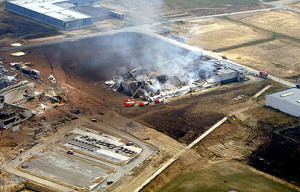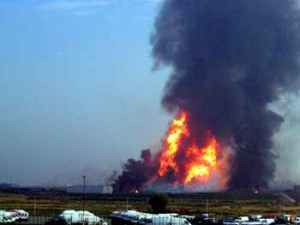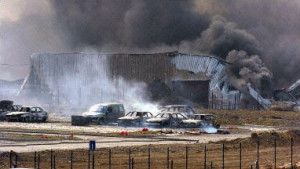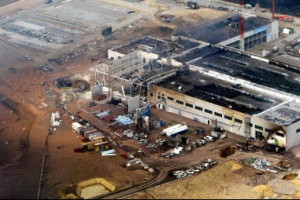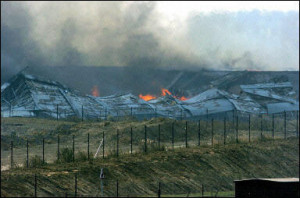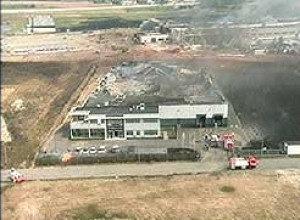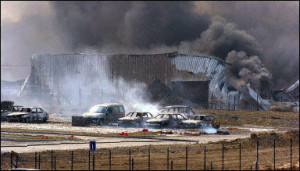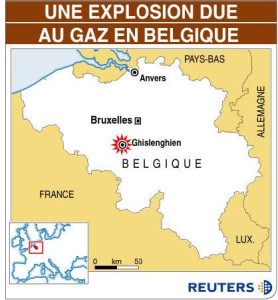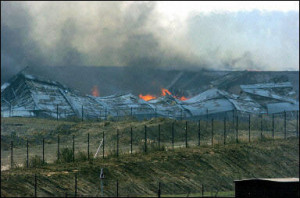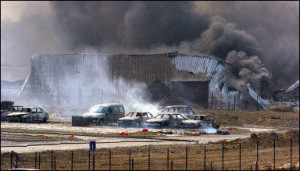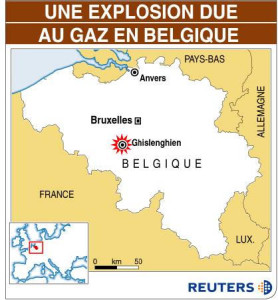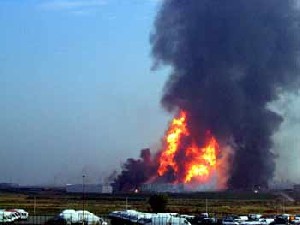The gas pipe connecting Zeebrugge to the Franco-Belgian border exploded violently in an industrial zone. Around 8.30 am, a leak was detected by the hissing sound made by the escaping, still odourless at that stage. The emergency services arrived for the rescue operations in the area located near a construction site of an abrasive tool manufacturing unit comprising around thirty workers. The gas pipe was located 1.10 m below the ground (diam: 1 m; P= 80 bar). At 9.00 am, a violent explosion was felt several kilometres away along with the formation of a massive fire ball (200 m high and 500 m in diameter). The fire spread to a neighbouring petrol station and construction site and destroyed them. The gas pipe was isolated. As of 8 September, the human casualty toll was very high: 24 people died (5 fire-fighters, 1 policeman and employees of the neighbouring companies), 50 people sustained serious injuries (mostly burns) and were hospitalised in Belgium and in the north of France and 79 people sustained light injuries. The most serious state of emergency was declared and a federal crisis unit was set up. Residents were asked to stay indoors and the E429, A8 motorways as well as the No. 7 national highway were closed unit late afternoon. The country deployed significant human and material resources (5 helicopters, army) with backup from France (65 rescue workers, 13 ambulances, helicopters, and an advanced medical unit), Germany, Luxembourg and the Netherlands. Significant and wide spread material damage was reported. According to witnesses these include an approximately 10 m diameter and 5 m deep crater, several hundred m of burnt area, cars burnt to a cinder as far as 500 m, debris scattered up to 6 km. A 6 tonne (?) section of the pipeline was recovered at 150 m. According to the press, suspicious marks (depth: 10 mm) were observed on the recovered section that supports the operators theory of the gas pipe already damaged by a public works vehicle. The operator also added that a change in the operating mode of the pipeline along with the damage caused led to the leak. The pipeline resumed operation on 10.09.04. The adjacent pipeline slightly damaged by the accident resumed functioning on 09.08.04. The final human casualty figures stood at 24 deaths and 132 injured. On the basis of the legal and expert report that estimated that the operation carried out a few months back had damaged the pipeline whose location moreover had not been clearly indicated to the parties involved in the site, the Tournai Public Prosecution confirmed the aforementioned theory and indicted eight natural persons and seven legal persons including the network managing company
Download the detailed report in .pdf format (319 Kb)



